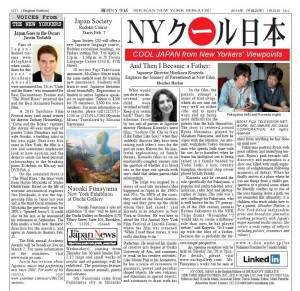【RocketNews24】Five Japanese customs even some Japanese people think are a pain
Posted by Michelle Lynn Dinh (Shimane-ken, Chibu-mura, 2010–13), editor and writer for RocketNews24. The following article was written by Casey Baseel, a writer and translator for RocketNews24, a Japan-based site dedicated to bringing fun and quirky news from Asia to English speaking audiences.
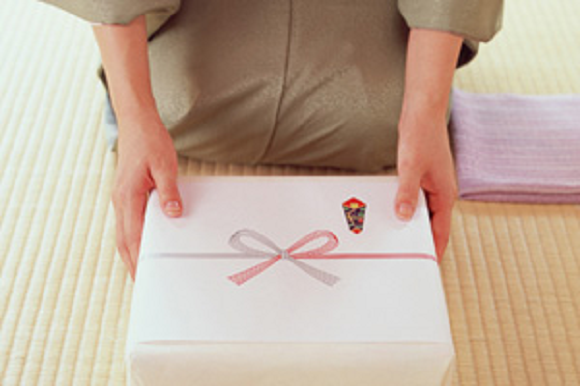
One of the trickier aspects of adapting to life in Japan is getting the hang of the numerous seasonal customs. While your acquaintances aren’t likely to get that bent out of shape if you miss a day or two, completely adhering to proper etiquette involves managing a year-round schedule of sending gifts and written salutations to friends, family, and business associates.
The sentiment is definitely admirable, but don’t Japanese people don’t find this all to be a huge hassle? Actually, it turns out some of them do, as shown in a poll of the top five seasonal traditions people in Japan would like to do away with.
Justin’s Japan: Nippon in New York—Japan Week at Grand Central, Mayday debut, Jake Shimabukuro

Ukulele hero Jake Shimabukuro returns to Highline Ballroom March 27. (Courtesy of Highline Ballroom)
By JQ magazine editor Justin Tedaldi (CIR Kobe-shi, 2001-02) for Examiner.com. Visit his Japanese culture page here for related stories.
Tucked between Oscar and cherry blossom season, March offers an unmissable array of concerts, performances and exhibitions, along with a special gathering to mark the three-year anniversary of the Tohoku earthquake and tsunami.
This month’s highlights include:
March 1-2, 2:00 p.m.
Kaleidoscoping Tohoku: Three Years After the Disaster in 2011
J-LABO Brooklyn, 300-302 Seventh Street, Park Slope
Free
Three years have now passed since the tsunami, earthquake and nuclear accident in 2011 rocked Eastern Japan, yet those who have visited since have been enchanted by the rich culture and history of Tohoku, forging relationships with local residents across generations and geographies. Now, various new projects, art works, crafts, and business from the traditional and the contemporary have emerged. Contents of the two-day event include regional progress reports; a silent auction and charity sale; an exhibition featuring a display of local crafts and a documentary film of Fukushima residents; and of course, food and sake!
Monday, March 2, 11:00 a.m./2:00 p.m./4:30 p.m.
Engleman Recital Hall at Baruch Performing Arts Center, 55 Lexington Avenue
$25 advance/$31 day of event at box office
A show for all ages, this celebration of otaku culture displays how total devotion to one’s artistry creates a truly unique and unforgettable performance. With 15 years of experience, Syan is considered one of the top balloon artists of Japan, becoming the first person ever to win the triple crown of Japanese balloon competition the year he turned pro. A graduate of Japan’s only circus school, Saito is an accomplished juggler, acrobat, balloon twister, and award winner best known for his ninja performance, where he showcases his artistry while clad in black.
March 6-8
Vanderbilt Hall at Grand Central Terminal, 89 East 42nd Street
Free
Japan Week’s annual program highlights unique features of Japanese culture from the last 100 years to the present. Delectable regional foods, technology exhibits, and traditional arts and performances will aim to inspire greater understanding of Japan and travel to the country. There’s something for everyone, from the fresh aroma of Kyoto green tea; a new NTT DOCOMO smartphone app that translates spoken Japanese and English; an introduction to Japanese artistry including hand-blown glass house wares, wooden keyboards and USB’s, gold lacquered iPhone cases; and more. Those planning an international trip can head to the Visit Japan booth for in-person info about travel and various regions.
For the complete story, click here.
JQ Magazine: Book Review — ‘Public Properties: Museums in Imperial Japan’
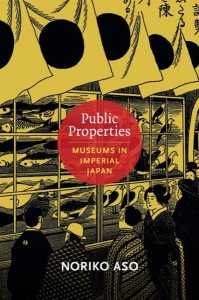
“Aso’s study is an intriguing, and refreshingly straightforward, examination of the shaping of the Japanese public in an era of increasing speed, change and modernization in the realm of how objects can promote, or even create, a national identity.” (Duke University Press)
By Jessica Sattell (Fukuoka-ken, 2007-08) for JQ magazine. Jessica is a freelance writer and a graduate student in arts journalism. Her favorite museum in all of Japan is the Fukuoka Asian Art Museum, but the Mori Art Museum is a close second.
Artist Barbara Kruger poses the pinnacle of questions in an untitled 1991 photograph and type-on-paper piece featuring a sunglasses-clad man whose mouth is twisted into a howl of wonder: “Why are you here?” She provides a few suggestions: “To kill time? To get ‘cultured’? To widen your world? To think good thoughts? To improve your social life?” When this piece is encountered within the walls of a gallery or art museum, these prompts can stir the viewer to question their place as a member of a larger conversation, rather than a simple viewer or consumer. This provokes further rumination: what do we feel when we go to museums, anywhere in the world? What connections do we have, or are we “supposed” to have, to an assortment of collected and cataloged objects arranged for public access? How are we shaped by social and political entities that can (and do) organize exhibitions around certain agendas? Design, of any kind, is never without direction.
Dr. Noriko Aso, Associate Professor of History at the University of California, Santa Cruz, addresses these, and several other powerful veins of inquiry, in her recently published book Public Properties: Museums in Imperial Japan (Duke University Press). She posits that the forerunner to the Japanese museum audience of today was shaped by governing bodies in a shift that brought state-safeguarded treasures out of storage houses and into public view. In this sense, museums in Imperial Japan (1868-1945) played a part far beyond that of the cultural repository and actually took on an active role in cultivating a Japanese national identity. Artworks, ancient artifacts and other cultural treasures helped to shape the self-representation of a self-actualized Japanese public.
【RocketNews24】There’s snow in my kitchen! Heaviest snowfall on record brings Yamanashi Prefecture to its knees
Posted by Michelle Lynn Dinh (Shimane-ken, Chibu-mura, 2010–13), editor and writer for RocketNews24. The following article was written by Cara Clegg, a writer and translator for RocketNews24, a Japan-based site dedicated to bringing fun and quirky news from Asia to English speaking audiences.
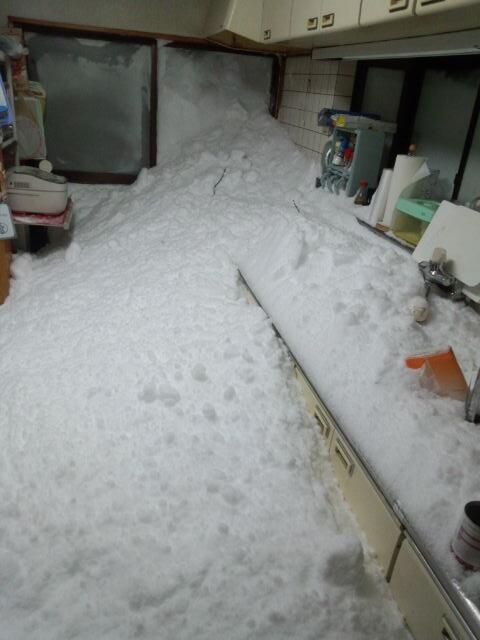
We’ve already seen Hokkaido residents putting a damper on the fuss Tokyo-ites are making over a bit of snow, but Yamanashi Prefecture genuinely might be able to give them a run for their money. Huge amounts of the white stuff has been causing problems across the prefecture, but has been comparatively underreported compared to events around the capital.
Residents have been taking to Twitter to share these shocking images that aren’t making it onto the news. Check out these rather epic photos.
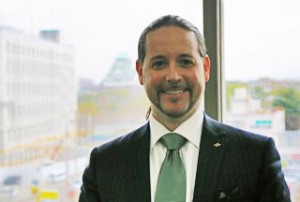
“I didn’t have any idea what I was getting into when I arrived as a JET, or if I would even be here longer than a couple of years. However, working for the future of these children, and trying to give them more opportunities in their future, has become my greatest personal accomplishment and given my life new meaning.” (Courtesy of Matthew Cook)
By Eden Law (Fukushima-ken, 2010-11) for JQ Magazine. Eden is a member of JETAA NSW, based in Sydney, Australia, which is part of the thriving JETAA Oceania community that covers Australia and New Zealand.
As a JET Programme success story, that of Matthew Cook (Osaka-fu, 2007-12)’s must surely rank as being one of the most extraordinary and inspiring. Hailing from Blacksburg, Virginia in the U.S., Matthew’s interest in Japanese martial arts led to his participation on JET. Beginning a five-year tenure as an in Osaka ALT, he also served as AJET national council chair, working with the Japanese government as well as JET alumni associations, international corporations, and news media about the value of the programme and internationalization. In 2012, after his JET tenure ended, he was hired by the Osaka Prefectural Board of Education as their Native English Teacher (NET) Program Coordinator, and in the following year, became a senior staff member appointed to the revolutionary English Education Reform Project—and as far as anyone knows, a first for a foreign-born, former JET to be appointed to a senior government role in education.
Now almost a year after his historic appointment, Matthew generously took some time out of his packed schedule to talk with JQ about his role, and most interestingly of all, provide some frank opinions about the JET Programme and the state and future of English education in Japan.
First of all, let me just say, congratulations on your achievement. In a nutshell, how did you go from being an ALT to a senior staff position at the Osaka Prefectural Board of Education? Is that something you could have imagined doing when you first arrived as a JET in 2007?
Thank you very much. It’s been a whirlwind, these past few years, and the congratulations are appreciated. However, we believe the real work is just beginning now.
During my time as a JET, I had the unique opportunity to develop my own curriculum and methodology, teaching junior high and elementary school students. I taught phonics part of a methodology, with the goal of extensive reading. I also had the honor being the AJET national council chair my final year on JET. That experience opened a lot of doors, allowing me to meet some influential people that I may not have been able to meet otherwise.
One of those people was Toru Nakahara, who was named the superintendent of the Osaka Prefectural Board of Education on April 1 of last year. He holds the strong belief that English education has been a failure in Japan, and wants to reform the system altogether. He was one of the first people to take my opinions and experiences seriously, and believed that I could use them to play a key role in the reformation of English education in Osaka. Because of that, I got the chance to interview for a position on his special “English Reform Project Team,” fondly referred to as the “Seven Samurai.”
It’s something I never would have dreamed of in 2007. In fact, I didn’t have any idea what I was getting into when I arrived as a JET, or if I would even be here longer than a couple of years. However, working for the future of these children, and trying to give them more opportunities in their future, has become my greatest personal accomplishment and given my life new meaning.
“Seven Samurai” is a wonderfully evocative name. Who are the other members on the English Reform Project Team?
I was hired from outside the board of education along with Kiyoshi Takeda, who was a high school English teacher in Shiga prefecture. He took a couple years off, and a few years ago he graduated from Harvard with a master’s in educational leadership.
Colleagues who already worked for the board education were teamed with us, because they should have a good understanding of the internal processes of the board of education. Two members from the high school division, two members from the prefectural education center, and one member from the elementary and junior high school division.
I know it’s early days yet, but what kind of impact does the appointment of a non-Japanese (and a former JET!) to a government position have on English education and the perception of JETs in particular?
That’s a tough question for me to answer. It’s a huge leap forward, and very encouraging from my viewpoint. I hope that it opens the door for other government entities in Japan to see what’s possible and search out capable employees with broader experience and different perspectives to add to their workplace. If there’s anything that I’ve learned, it’s that diversity should be celebrated and encouraged.
【RocketNews24】Nippon or Nihon? No consensus on the Japanese pronunciation of “Japan”
Posted by Michelle Lynn Dinh (Shimane-ken, Chibu-mura, 2010–13), editor and writer for RocketNews24. The following article was written by Master Blaster, writing team for RocketNews24, a Japan-based site dedicated to bringing fun and quirky news from Asia to English speaking audiences.
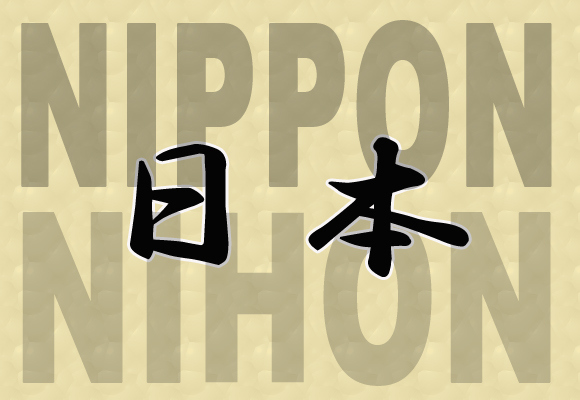
As any student of Japanese will tell you, its use of Chinese characters known as kanjican be a nightmare at times. And although they can be really useful at deducing the meaning of complex words, they give little in the way of clues as to how one should pronounce them.
Take the kanji for Japan (日本) for example. Even a first grader can tell you what it means, but ask a group of adults how to pronounce it and you might get a mixture of “Nihon” or “Nippon” and maybe even an occasional “Yamato” if one of those people happens to be a smart-ass.
JQ Magazine: JETAA UK Launches Careers and Networking Programme
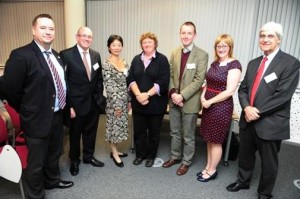
JETAA UK members Sarah Parsons (second from right) and Rob Gorton of Toyota (second from left) attend the inaugural Careers and Networking Programme reception with guests in the fields of business and academia, Nottingham, Oct. 3, 2013. (University of Nottingham)
By Sarah Parsons (Gunma-ken, 1995-97) for JQ magazine. Sarah is the careers and networking coordinator for JETAA UK and chair of the Midlands Chapter. She also runs her own business called Japan In Perspective, where she facilitates business links between the UK and Japan.
There are a variety of ex-JETs: those who have just returned looking for jobs and hoping to make sense of and use their JET experience, and those who are still interested in keeping in touch with Japan who have been very successful using their JET experience professionally—whether it be directly Japan-related or using it as a catalyst for a new career—but who have not been engaged with JETAA for a long time, if ever. Several things became evident.
First, JET can be a life-changing experience that offers so many potential professional opportunities, but the professional needs of our members are not being formally facilitated within JETAA UK. Secondly, the job environment in the UK is getting more and more competitive and it is very challenging for ex-JETs to stand out, gain more business skills and use their experiences professionally, so there is a demand for helping JETs with their post-Japan careers; and thirdly, in order to achieve any of this, JETAA needs to raise its profile professionally and engage with local business communities.
In this vein, we decided to map out a multifaceted programme within JETAA UK to facilitate these needs and to engage and utilise the expertise of some of our more experienced members. We wanted to organise networking events for local ex-JETs to meet the local business communities (UK companies that are interested in Japan as well as local Japanese companies) so as to offer great opportunities for JETs to develop important contacts and give attendees a chance to keep up to date on what is happening in the Japan-related business world.
【RocketNews24】10 weird and funny things Japanese people do
Posted by Michelle Lynn Dinh (Shimane-ken, Chibu-mura, 2010–13), editor and writer for RocketNews24. The following article was written by Philip Kendall (Fukushima-ken, Shirakawa-shi, 2006–11), senior editor and writer for RocketNews24, a Japan-based site dedicated to bringing fun and quirky news from Asia to English speaking audiences.
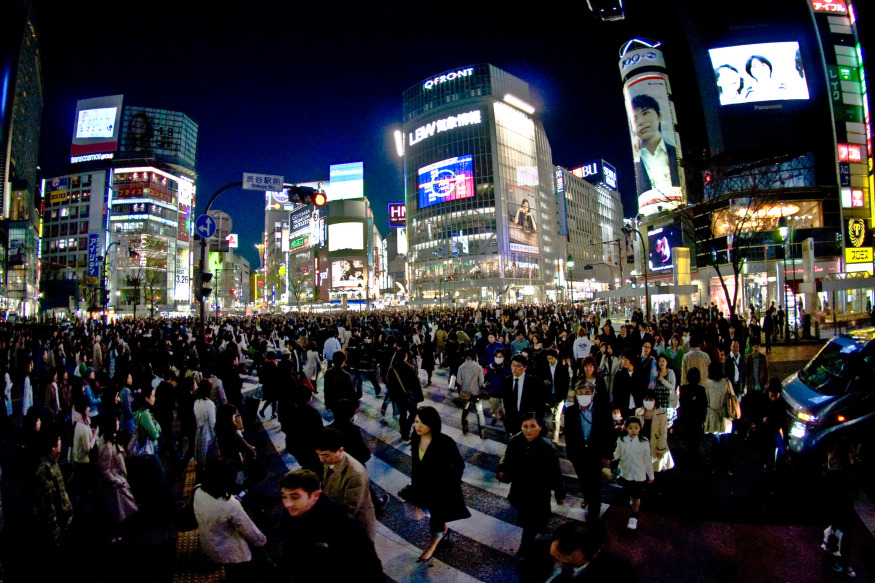
Not so long ago, a friend of mine from the UK came to visit me here in Japan. After showing him around town and making sure to take him to all of the most popular tourist spots, he remarked that quite a few of the subtle behaviours Japanese people exhibit seemed, while in no way offensive, remarkably different to those of our own countrymen. As we worked through a couple of the more unusual customs and behaviours that my friend had noticed, it struck me that at some point during my eight years of living here I had come to accept the everyday quirks of the people around me as entirely normal and not in the slightest bit odd.
Last year, we discussed the 10 things that we love and the 10 things we just can’t stomach about Japan, but today we at RocketNews24 felt it was time to present you with a list of random but genuine observations, from the peculiar to the downright endearing, about the Japanese people themselves. Enjoy!
JQ Magazine: JQ&A with Photographer Wei Yuet Wong on ‘The Fukushima Project’
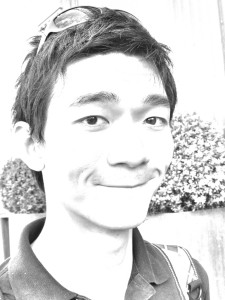
“Though people have told me no one wants to see disaster photos anymore, I think it’s a good reminder because it’s barely three years, and already people are forgetting. Not only outside Japan, but within Japan itself, people are forgetting. It’s true that people need to move on and rebuild their lives, but there’s still so much more work to be done in Tohoku.” (Courtesy of Wei Yuet Wong)
By Nathalie Ng (Shizuoka-ken, 2010-11) For JQ magazine. A member of JETAA Singapore, Nathalie was an inaka JET and her time in Japan has taught her to appreciate the flowers by the roadside and how to snowboard.
Wei Yuet Wong (Nagano-ken, 2008-10) left his home in Singapore to join JET following a summer homestay in Hiroshima. He went there because of the history as he’d learnt about the devastation during World War II, and he was particularly interested in seeing how the city had progressed since then. The relationship formed with his homestay family inspired him to join JET.
Assigned to three different schools in Ueda City, during his first few months he was often left feeling clueless and dependent on his supervisor due to the language barrier and the office hierarchy, but he soon got better at it by keeping an open mind and adapting. He is particularly proud that he was able to inspire in his students that they didn’t have to speak English with an American accent to be understood, and this has helped them to be more confident, speaking out during and outside of classes. (In fact, one of Wong’s former students even visited him and his family during the Chinese New Year.)
Since returning from Japan Wong has been working as a corporate warrior, but since last year he has finally taken the leap to pursue his photography interests. His work is now on display in a new exhibition called The Fukushima Project, which runs through 14th February at Select Books in Singapore on 51 Armenian Street. Through special postcards available for sale, visitors can write messages to the people of Hisanohama in Iwaki, which will then be collected and sent to them to let them know that their story has not been forgotten.
In this exclusive interview, JQ spoke with Wong about his visits to Fukushima before and after the 2011 Tohoku earthquake and tsunami, and the relationships he’s made with the locals through his numerous community activities.
You were posted to Nagano-ken and you lived there before the quake happened. What was your motivation for this exhibition?
I felt awed and hopeless when I first looked at the videos of the earthquake, perhaps like so many people around the world. Then why Fukushima? I think there may be three explanations. One, I first visited Fukushima in 2009 to visit friends, so I got to see Fukushima before the disaster. It was quite a different place.
Two, I have friends in Fukushima, and they live in Koriyama city, about 45 km away from the Fukushima No. 1 nuclear power plant. I was concerned about them. I was curious to know how they felt on the day of the earthquake, and then during the subsequent confusion about the nuclear power plant. I also wanted to see how they are doing when most other parts of the world, and Japan, starts forgetting about them.
Lastly, I wanted to experience how it would be like to venture into the disaster zone. I have a need to see things for myself. To touch the soil. Walk on the sand. Smell the salty air on the Japanese east coast, and try to imagine how people felt that day.
Why did you choose this particular town of Hisanohama?
It was by chance that I discovered this town. It’s quite a story, one thing leading to another, with some fortunate chance encounters. But, the best summary is: I met a friend at Koriyama Station to listen to her account, and her experiences. After that I wanted to visit the coast, so she told me that Iwaki is where I should go. With my ticket bought, I hopped on the bus for the 1.5 hour journey to Iwaki. Once at Iwaki, I went to the local tourist office, and asked for directions to the coast. The person at the office looked quite surprised, and she pulled out a map, studied it for a moment, and said, “Maybe you shouldn’t go. We used to have nice beaches, shrines, and attractions. But now, nani mo nai (there’s nothing).” I was not put off, and she finally realised that I would still go no matter what, and she suggested why don’t I go to Hisanohama, where I can have a nice walk, and just look around. So, there I went.
In the international media, most people know about Kesennuma, Rikuzentakata and Minamisoma, but Hisanohama remains unknown. So, I think it’s nice that I visited Hisanohama. It’s a town just 31 km south of the Fukushima No. 1 nuclear power plant, along the Pacific Coast, and has suffered great damage in the tsunami.
Justin’s Japan: Nippon in New York — ‘Dragon Ball’ in Color, Lolita Fashions, ONE OK ROCK’s Debut
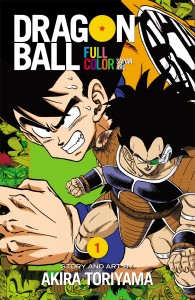
Dragon Ball Full Color makes its English-language debut in print and digital Feb. 4. (VIZ Media LLC)
By JQ magazine editor Justin Tedaldi (CIR Kobe-shi, 2001-02) for Examiner.com. Visit his Japanese culture page here for related stories.
Stay warm this winter with some hot local events, from the debut performance of one of Japan’s most successful live acts, another performance from one of the country’s biggest crossover stars, and an annual showcase that brings the sights (and tastes) of Japan to vivid life.
This month’s highlights include:
Saturday, Feb. 1, 6:00 p.m.
Asia Society, 725 Park Avenue
Free
The final entry of the film series Vengeance Is Shohei Imamura! Yasuko was exposed to black rain, the radioactive fallout from the atomic bomb dropped on Hiroshima. Years later, she and her townsmen continue to rebuild their life and endure the aftermath. At an age ripe for marriage, Yosuko has been rejected by man after man for fear of radiation, even though she has shown no signs of any illness. The film juxtaposes present-day struggles with flashbacks to scenes of wartime devastation. A departure from Imamura’s usual interest in bawdy human behavior, this film brings him closer to his early mentor Ozu, who is known for his restrained and subdued study of quiet dignity and for whom Imamura acted as assistant director.
Tuesday, Feb. 4
Dragon Ball Full Color, Volume 1
$19.99 MSRP
Akira Toriyama’s epic manga series—one of the most popular of all time—makes its English-langage debut in full color, graphic novel-size in print and digital editions! Son Goku is the greatest hero on Earth. Five years after defeating the demon king Piccolo, he’s grown up and has a family. But what is the real reason for Goku’s incredible strength? A visitor from outer space arrives bearing terrible news—Goku is an alien, and the visitor, Raditz, is Goku’s brother! When Raditz turns out to be a ruthless killer, Goku must fight his incredibly strong brother to save his family and the entire human race. A surprising alliance may be Earth’s last hope: Goku will team up with his old enemy Piccolo to save the world!
Tuesday, Feb. 4, 7:30 p.m.
Joe’s Pub, 425 Lafayette Street
$30 reserved, $35 premium
Akiko Yano returns to Joe’s Pub with her longtime New York friends/virtuoso musicians Will Lee and Chris Parker, answering overwhelming demand from the fans who caught their previous go-round in November 2012. See the pop and jazz chanteuse whom Jon Pareles of the New York Times calls “a world class songwriter with a clear, gentle, wide-ranging voice. She is also an accomplished, endearing performer who might be a Japanese Carole King, Joni Mitchell or Meredeith Monk…”
For the complete story, click here.
【RocketNews24】Grated radish art from Japan brings the cute to your favourite dishes
Posted by Michelle Lynn Dinh (Shimane-ken, Chibu-mura, 2010–13), editor and writer for RocketNews24. The following article was written by Oona McGee, a writer and translator for RocketNews24, a Japan-based site dedicated to bringing fun and quirky news from Asia to English speaking audiences.

If you’ve been keeping up with the amazing 3-D latte art trends going on in Japan’s barista world right now, then you might want to take a look at their savoury counterparts popping up in grated radish form. Instead of swimming in cups of coffee, these adorable home-made creations are taking dips in winter hot pots and stews. Join us as we take a look at some of the cutest critters on offer, from Ghibli characters to sleeping cats, and see just how easy it is to cook up some edible cuteness at home.
JQ Magazine: MIT Professor Ian Condry Explores ‘The Soul of Anime’
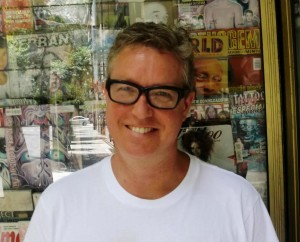
“I think it’s a challenge coming back from JET. But the times and experiences we had will really pay off in the long run even if in the short term it’s hard to see how they will apply.” (Courtesy of Web.mit.edu)
By Sheila Burt (Toyama-ken, 2010-12) for JQ magazine. Sheila is a Chicago-based journalist who blogs at www.sheilaburt.com.
Anime can easily be called a global phenomenon. In the past few decades, several anime TV series and movies have grown so successful that even people with little knowledge of Japanese culture can probably name at least one anime show or character. But how is something that is so labor intensive, costly and culturally quirky able to transcend oceans and inspire rabid fan bases?
A participant in the JETAA Regional Conference held at Harvard University earlier this month, cultural anthropologist Ian Condry (Miyagi-ken, 1988-89) explores this question in his new book, The Soul of Anime. An associate professor of comparative media studies at MIT since 2002, Condry researches cultural movements that go global, looking at how and why certain local phenomenon spread. The Soul of Anime is his second book, followed by Hip-Hop Japan: Rap and the Paths of Cultural Globalization (2006), about the inner world of Japanese hip-hop.
Although initially interested in the business model of anime, Condry changed the focus of his research after learning, rather surprisingly, that “No one gets rich making anime. And in fact, it’s a terrible business model.” Rather than looking at how anime sustains itself business-wise, Condry looks at the power of anime as a platform where, oftentimes, fans and other forms of “collaborative creativity” are at the heart of anime’s success. In order to illustrate this argument, Condry tells the story of Gundam, an anime series about giant robots that first aired in 1979. It was initially a ratings failure, but after fans created everything from encyclopedias to timelines about the show, it became a cult sensation, eventually becoming the longest-running anime series in Japanese history.
“If you look at media only in terms of the genius of the creators or the kind of business model that it fits into, then you miss the power of fans and the importance of the value they add to the products,” Condry explains. “That’s sort of what the book is about. I think now we’re starting to see that all over the place with Facebook, Wikipedia, and Twitter, all these kind of media platforms where the content is made by the users but then there’s this interaction between the users and the platform producers that make all the difference.”
Justin’s Japan: Japan Goes to the Oscars
By JQ magazine editor Justin Tedaldi (CIR Kobe-shi, 2001-02) for Shukan NY Seikatsu. Visit his Examiner.com Japanese culture page here for related stories.
Fans of Japan-themed cinema were delighted when candidates for this year’s Academy Awards were announced Jan. 16, as Cutie and the Boxer was nominated for Best Documentary Feature and The Wind Rises received the nod for Best Animated Feature Film.
A 2013 Sundance Film Festival entry (and award winner for director Zachary Heinzerling), Cutie and the Boxer captures the stormy 40-year marriage of painter Ushio Shinohara and his wife Noriko, a budding artist in her own right. Shot over five years in New York, the film is a raw and sometimes unpleasant look at how egotism and the desire to create can bend personal relationships to the breaking point. It will be released on Blu-ray and DVD Feb. 4.
On the animated front is The Wind Rises, the latest work from Hayao Miyazaki of Studio Ghibli fame. Based on the life of wartime aeronautical engineer Jiro Horikoshi, it was the top-grossing film in Japan last year and is the third Oscar nominee for Miyazaki (he previously won for 2001’s Spirited Away). It could also be his last, as he announced his retirement in September. The film receives a domestic theatrical release Feb. 21, and marks a bold new thematic direction for the maestro.
The 86th annual Academy Awards will be broadcast live on March 2. For more information on the nominees, visit www.oscar.go.com.
【RocketNews24】10 everyday English words that were originally Japanese
Michelle Lynn Dinh (Shimane-ken, Chibu-mura, 2010–13) is an editor and writer for RocketNews24, a Japan-based site dedicated to bringing fun and quirky news from Asia to English speaking audiences.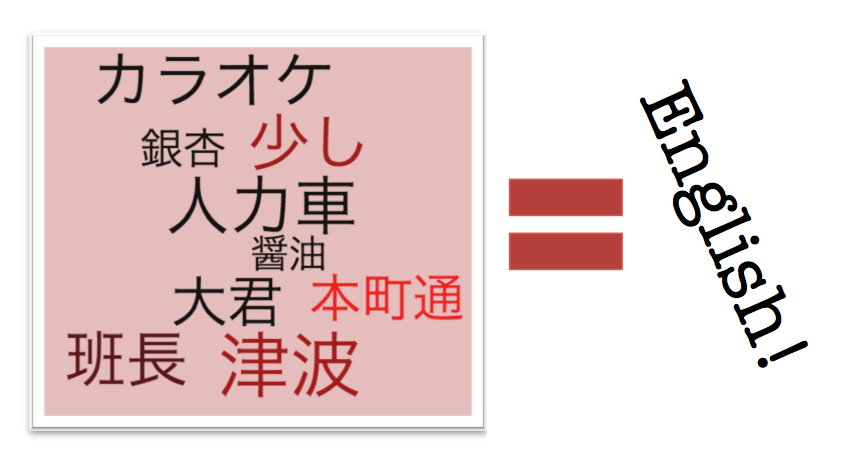
While Japan’s bank of English loan words has grown to the point where “context” and even “paradigm” can be understood by most people, there seems to be only a handful of Japanese words that have been sprinkled into the modern English vocabulary. Of course, there’s things like “manga”, “sushi,” and “karate,” which English speakers can instantly recognize as comics, a Japanese food, and a way to kick ass (in that respective order), but there are also some sleeper agent Japanese words traipsing about our English conversations. Let’s take a look at Japanese words, like “honcho” (as in “head honcho”) and “tycoon” (as in “oil tycoon”), that we use in English.
JETAA British Columbia Newsletter – January 2014
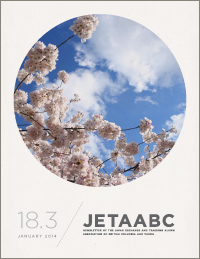
The latest issue of the JETAABC (JETAA British Columbia) Newsletter is now available. In this issue, they talk about the JET Returnees’ Reception and Career Development Seminar, a year-end summary from the Vancouver Island subgroup, how to get mobile data when travelling in Japan, how to eat gluten-free in Japan, and much more!
- PDF: http://www.jetaabc.ca/wp-content/uploads/2013/01/NewsletterV18N3.pdf
- Online viewer version on Issuu.com at http://issuu.com/jetaabc/docs/newsletterv18n3

